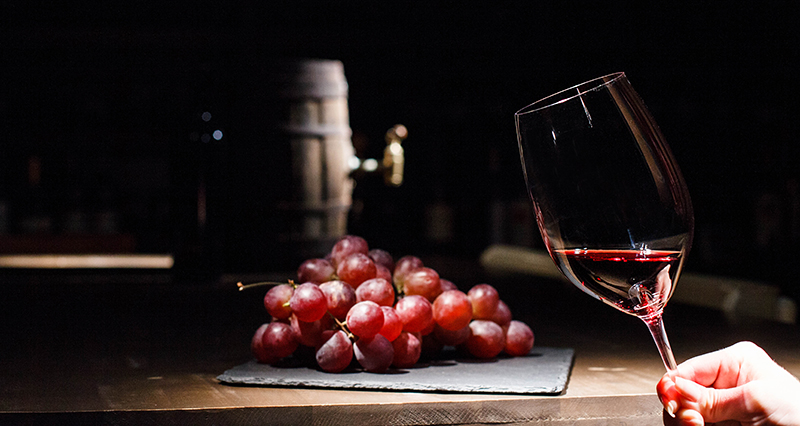RED VINIFICATION
The process by which must becomes wine is the alcoholic fermentation. It is a chemical reaction—brought about by yeasts that are naturally present on ripe grapes–in which sugars are converted into ethanol and other reaction products.
During this transformation the resulting ethyl alcohol makes up60% of the total sugar present in the must. It follows that a must with a sugar content of 20%, at the end of wine fermentation gives origin to a wine containing 120 ml / L of ethanol, or that is, 12% alcohol by volume. The side products of fermentation (glycerol, diacetyl, succinic acid, malic acid, acetic acid, acetaldehyde, etc.) altogether make up 5% of the transformed sugars and are very important to the aroma and flavour of the wine. The remaining percentage up to 100% is constituted by carbon dioxide, which grows abundantly during fermentation.
The must, obtained after destemming the grapes, remains in contact with the skins and grape seeds (the marc) for a period of time which varies depending on the desired effect. If vinification is done by leaving the must to ferment with the marc for a relatively long period of time (7-15 days), the term “fermentation maceration” is used, also referred to as “red vinification”. The aforementioned definition relates to the fact that the colouring substances present in the skins are extracted over time by exploiting the solubilizing action of the alcohol produced during fermentation.
There are various techniques used to enhance contact of the marc–which tends to float on the must forming the so-called “cap”–with the underlying must:
•pressing: mechanical action exerted on the cap to submerse it in the must (normally done by the vinedresser twice a day);
•pump over: wetting the top of the cap with the must collected from the bottom of the vat and sent back up by means of a pump for liquids;
•submerged cap fermentation: introduction of a mesh screen into the vat that hinders the emersion of the marc onto the surface of the must creating a cap that remains immersed in the must.

Once fermentation is complete, the new wine, cloudy and rich in carbon dioxide, is separated from its marc by siphoning it off, called racking. Depending on the particular case, the new wine or “free run wine” is to be sent into steel vats or wooden barrels, while the marc is pressed, from which pressed wine is obtained.
The pressed wine less noble than that obtained by racking can be either mixed with the “free run” or used as a low-quality finished product.

